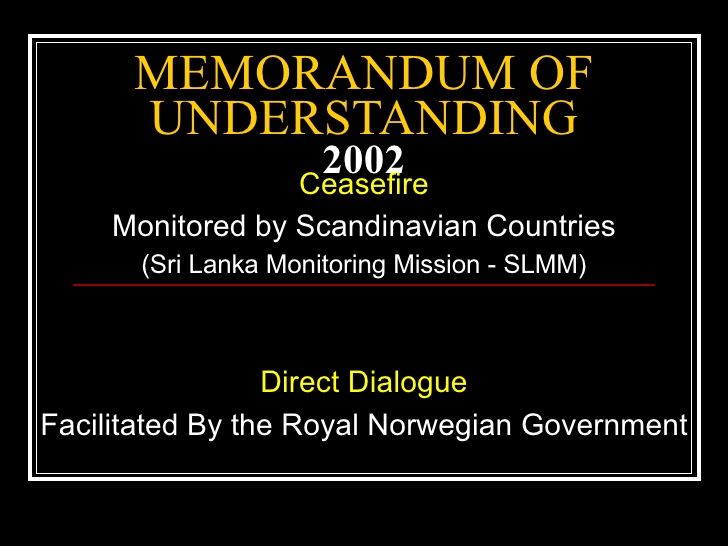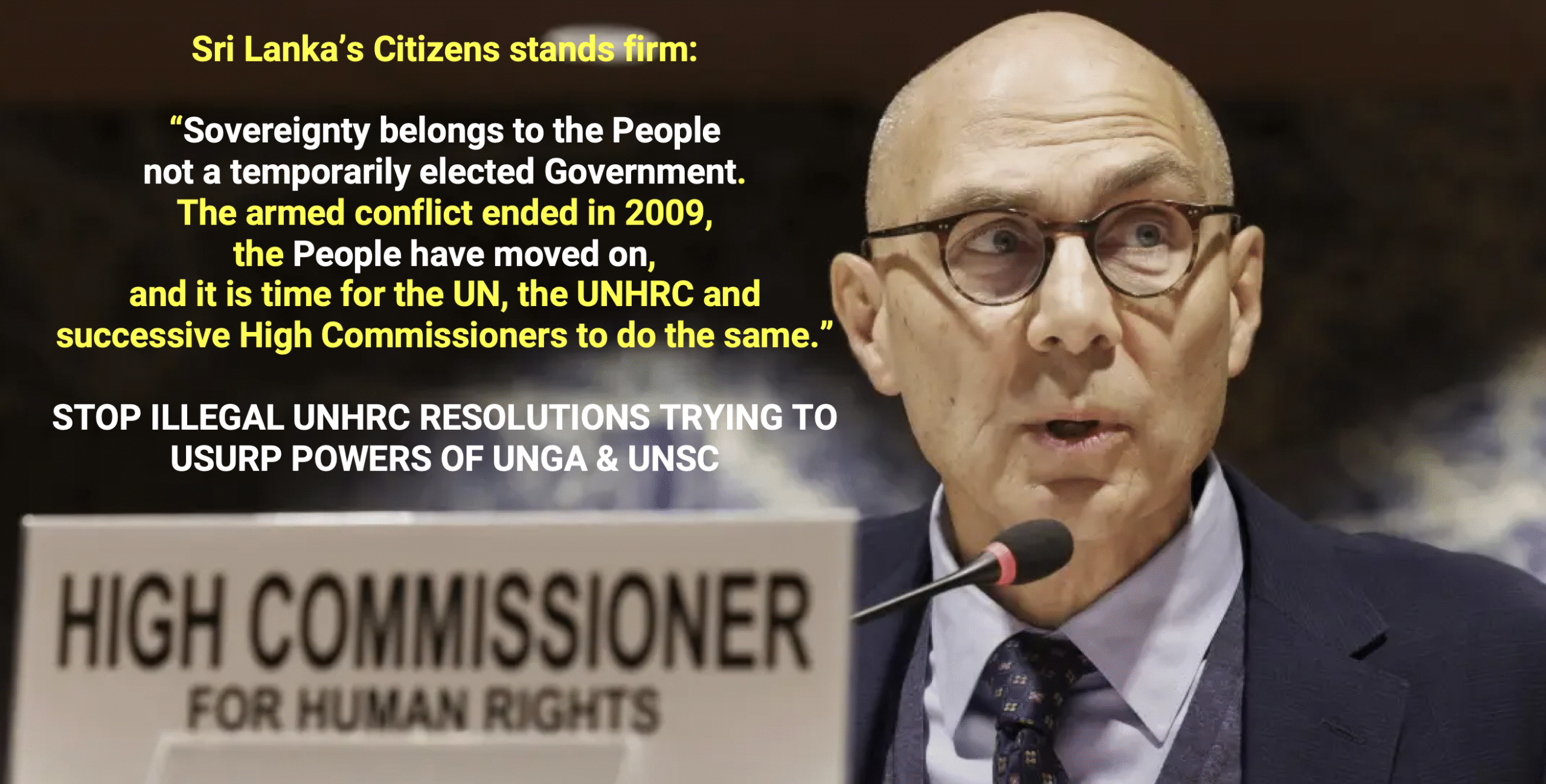War Victory 2009: Revisiting the 2002 Sri Lanka Monitoring Mission (SLMM) & its failure & lessons for Sri Lanka

The Sri Lanka Monitoring Mission (SLMM) was established in 2002 to oversee the implementation of the Ceasefire Agreement (CFA) between the Sri Lankan government (GOSL) and the Liberation Tigers of Tamil Eelam (LTTE), with the support of the Norwegian government. The SLMM, composed of monitors from Nordic countries, was tasked with ensuring compliance with the CFA. However, over the course of its operations, serious concerns arose regarding the SLMM’s effectiveness and its impartiality.
Key points include:
https://www.ptsrilanka.org/wp-content/uploads/2017/04/slmm_final_report.pdf
1. LTTE Violations: 3830
Between February 2002 and April 2007, the SLMM documented 3,830 violations by the LTTE, including killings, abductions, and recruitment of child soldiers. In contrast, only 356 violations were attributed to the Sri Lankan Armed Forces.
2. LTTE allowed to consolidate power:
The SLMM’s presence was criticized for allowing the LTTE to regroup, rearm, and strengthen its control over territory. Despite the monitoring mission, the LTTE continued to commit violent acts, including assassinations, forced recruitment, and extortion.
3. Indirect Assistance to LTTE:
SLMM was accused of indirectly aiding the LTTE, including helping them evade capture, with some claiming that SLMM tipped off the LTTE about military actions. This raised concerns about the impartiality of the monitors.
Wikileaks cable reported that SLMM had indirectly assisted LTTE in evading arrest by tipping them off about military movements enabling LTTE to escape capture or disrupt military operations.
A 2003 wikileaks cable revealed that a US diplomat James F Entwistle reported a conversation with SLMM officers who admitted helping LTTE evade apprehension.
SLMM’s Chief, Tryggve Teleffsen, asked to Leave:
- Tryggve Teleffsen, the SLMM Chief during part of the mission, was asked to leave Sri Lanka after allegations surfaced about his potential bias and his interactions with the LTTE. Some reports suggested that Teleffsen was aligned with the Tamil Tigers’ interests than with the Sri Lankan government’s position.
- This incident fueled the suspicion that some SLMM officers may have had personal or professional links to the LTTE, further complicating the mission’s ability to act as an impartial third party in monitoring the ceasefire.
LTTE’s access to SLMM Resources and Support:
- There were accusations that some SLMM officers facilitated the LTTE’s operations, allowing them to move freely through areas controlled by the Sri Lankan government and even assisting them with transport or other logistical support.
- The SLMM was given freedom of movement throughout Sri Lanka, including areas controlled by the LTTE. Some critics argued that this mobility allowed the LTTE to continue their operations without facing the same level of scrutiny as the Sri Lankan government forces.
- Allegedly, the SLMM allowed the LTTE to use its communications infrastructure, which could have been used to coordinate military actions or secure logistical supplies for the LTTE’s operations.
SLMM’s Role in LTTE Travel and Activities:
- There were allegations that the SLMM assisted LTTE leaders in traveling abroad and even facilitated meetings with foreign governments or organizations. For example, there were reports that the SLMM helped Sea Tiger commander Soosai travel to Singapore for medical treatment.
In particular, the former President Chandrika Kumaratunga accused the SLMM of being complicit in helping the LTTE evade capture, alleging that the SLMM had intentionally misled the GoSL about the LTTE’s activities.
4. Failure to Prevent Killings:
The SLMM failed to prevent significant events like the assassination of Sri Lanka’s Foreign Minister, Lakshman Kadiragamar, by the LTTE in 2005. The mission was seen as ineffective in stopping LTTE violence, despite its presence.
5. CFA and LTTE Empowerment:
The CFA, which was meant to bring peace, inadvertently gave the LTTE significant leverage, including control over certain territories and freedom of movement. This allowed the LTTE to establish administrative systems, including their own police and courts, and strengthened their military capabilities.
6. International Monitoring Ineffectiveness:
The report suggests that the presence of foreign monitors like the SLMM was largely ineffective in preventing violence, and raised doubts about the impartiality of international actors in Sri Lanka’s conflict.
The overall conclusion is that the SLMM’s monitoring role was marked by bias and failure to prevent violations, ultimately contributing little to the peace process and instead allowing the LTTE to gain strength.
This serves as a cautionary advice against relying on foreign monitors to resolve national conflicts.
The presence of the Indian Peace Keepers was another example of the failure of external elements arriving to deliver peace.
The sudden cabinet approval for the “independent prosecutor’s office” aligned with UNHRC resolution demands also rings alarm bells given the repeated attempts since 2015 to create an international tribunal office in Sri Lanka of a hybrid court. Political parties enjoying power for a term are happy to approve & pass headache to the next government caring little for the repercussions international interference will do to a Nation & its people.
Those following the UNHRC resolutions from its initial stages would realize that every demand made of the GoSL had nothing to do with the conflict & was all about weakening Sri Lanka’s sovereignty & paving the way for international players to decide how governance was to take place by plugging Sri Lanka’s systems into the UN system using the flogged “accountability” “transparency” mumbo jumbo terms.
Shenali D Waduge







